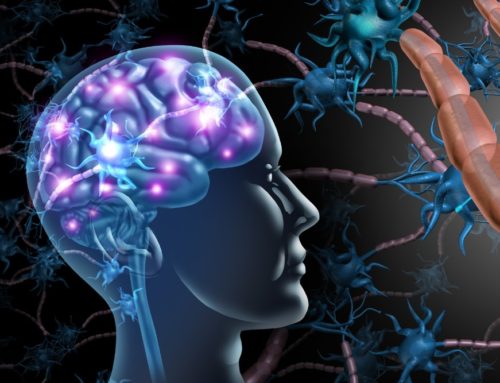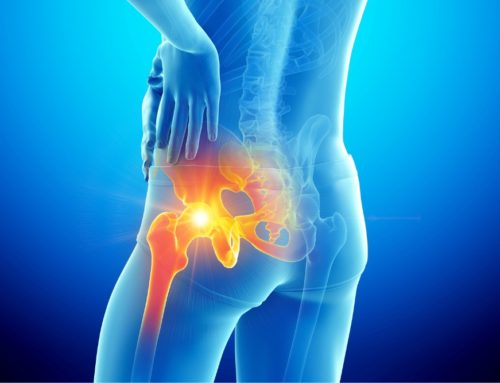Signs of Poor Lymphatic Flow and Why They Matter
The lymphatic system is a complex network of channels that transports lymphatic fluid throughout the body. It connects to most areas and is vital for fighting infections, detoxifying, and maintaining energy. When experiencing poor lymphatic flow, you may notice one or more concerning symptoms, including inflammation, fatigue, or digestive issues.
To improve lymphatic drainage, medical professionals often recommend exercise. Regular movement and exercise often increase fluid flow, reducing swelling and other complications. Hydration, deep breathing exercises, and massage may also improve your symptoms, including those discussed below.

Signs of Poor Lymphatic Flow
The lymphatic system comprises vessels, nodes, cells, and organs that produce lymph and distribute it throughout the body. Though complex, this network is also delicate and often damaged from infection, cancer, trauma, or obstructions. These issues could disrupt lymphatic drainage. The following symptoms could notify you of such an occurrence.
Swelling & frequent infections
Swelling and other symptoms may indicate lymphedema, a malformed lymphatic system disorder. When lymphatic fluid can’t move freely through the lymphoid system, it collects in the body. Poor lymphatic flow may occur almost anywhere, including the arms, legs, neck, chest, or oral cavity.
Infections are also frequently the result of disrupted lymph drainage. A virus, bacteria, or fungus infects the lymph nodes, causing pain, inflammation, redness, and pus. The infection may be localized or spread to other lymph nodes and the rest of the body. It also alters fluid flow, preventing the white blood cells in the nodes from fighting the infection.
Fatigue, feeling heavy & brain fog
When your lymphatic system is congested, resulting in poor lymphatic flow, you may notice increased fatigue. Your lymph nodes contain white blood cells used to fight infections. When lymph drainage is compromised, your body has to work harder to increase immune function, tiring you out.
Individuals experiencing slow lymphatic drainage also report other symptoms, including brain fog, lethargy, and body aches. A heavy feeling, as if your limbs are filled with molasses, has also been reported. These lymphatic issues could result from fibromyalgia, arthritis, Lyme disease, or other conditions requiring immediate medical attention.
Skin issues
Several skin complications are associated with poor lymphatic flow. Small breaks in the skin trap germs and breed infection. Swelling, warmth, pain, and redness alert you to collected lymphatic fluid beneath the skin that can’t drain properly. The fluid may also cause blistering or leakage through tears in the affected area.
Severely disrupted fluid flow may also cause changes to your skin’s texture. It often becomes thick and hard, similar to the skin of an elephant. Your doctor may recommend the use of compression bandages or garments to improve drainage and skin complications.
Digestive issues
The lymphatic system is closely connected to digestion. Poor lymphatic flow through these areas often disrupts gastrointestinal function, causing various digestive issues.
Since the lymphatic system aids in immune function, slow lymph drainage alters immune responses. It may also cause excess protein to leak from the GI tract into the intestines. Symptoms include gut inflammation, nausea, abdominal pain, and diarrhea. Crohn’s disease and ulcerative colitis are disorders commonly associated with lymphatic dysfunction.
If you notice any of these symptoms, consult a healthcare provider. Improving lymphatic flow through exercise, hydration, and medical treatment can significantly improve quality of life
Resources:
- NCBI, March 6, 2023, Anatomy, Lymphatic System
https://www.ncbi.nlm.nih.gov/books/NBK513247/ - NCBI, April, 19, 2023, Lymphedema
https://www.ncbi.nlm.nih.gov/books/NBK537239/ - Johns Hopkins Medicine, Lymphadenitis
https://www.hopkinsmedicine.org/health/conditions-and-diseases/lymphadenitis - Cleveland Clinic, Lymphatic Drainage Massage
https://my.clevelandclinic.org/health/treatments/21768-lymphatic-drainage-massage - Global Lyme Alliance, June 7, 2024, Lyme Disease and Lymphatic Drainage
https://www.globallymealliance.org/blog/lyme-disease-and-lymphatic-drainage#_edn3 - Mayo Clinic, Lymphedema
https://www.mayoclinic.org/diseases-conditions/lymphedema/symptoms-causes/syc-20374682#:~:text=With%20severe%20swelling%2C%20the%20lymph,the%20skin%20of%20an%20elephant - PMC, Sept. 1, 2011, Gastrointestinal Lymphatics in Health and Disease
https://pmc.ncbi.nlm.nih.gov/articles/PMC3026597/#:~:text=Intestinal%20lymphatics%20are%20the%20central,the%20maintenance%20of%20gut%20homeostasis
This article contains informational and educational materials and does not replace health or medical advice. For questions or concerns regarding your medical condition or health objectives, speak to a qualified physician or healthcare provider.






Leave A Comment